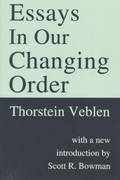Question
https://moodle.lsus.edu/mod/resource/view.php?id=660871 https://moodle.lsus.edu/mod/resource/view.php?id=660872 Let's examine the history of LSUS undergraduate enrollment vs. its tuition and fees. Download the A3Q1 LSUS enrollment data Excel file; in it
https://moodle.lsus.edu/mod/resource/view.php?id=660871
https://moodle.lsus.edu/mod/resource/view.php?id=660872
Let's examine the history of LSUS undergraduate enrollment vs. its tuition and fees. Download the "A3Q1 LSUS enrollment data" Excel file; in it you will see historical information on LSUS undergraduate enrollment, total credit hour production, and (12-hour) tuition and fees. (If you wish, you can verify or look up additional information here, here, and here.)
Calculate annual elasticities for both types of quantity variables (i.e., you will have an elasticity of price vs. headcount, and one of price vs. credit hour). You will get an error message in your calculations when the tuition doesn't change (like in 2006-2007), since the elasticity calculation will be trying to divide by zero; just delete those error values in your Excel table so that the cells are blank. The first headcount elasticity will be calculated based on the 2000 and 2001 values of tuition and headcount and should be about -0.008; the first credit hour elasticity will also be based on the 2000 and 2001 values and should be about 0.359). Calculate the average annual elasticity for headcount (from 2000-2019), and the average annual elasticity for credit hour (from 2000-2019).
Many administrators argue that, to increase revenue to LSUS to cover budget shortfalls, tuition should be raised. Comment on this suggestion, using the evidence you've uncovered.
Step by Step Solution
There are 3 Steps involved in it
Step: 1

Get Instant Access to Expert-Tailored Solutions
See step-by-step solutions with expert insights and AI powered tools for academic success
Step: 2

Step: 3

Ace Your Homework with AI
Get the answers you need in no time with our AI-driven, step-by-step assistance
Get Started


